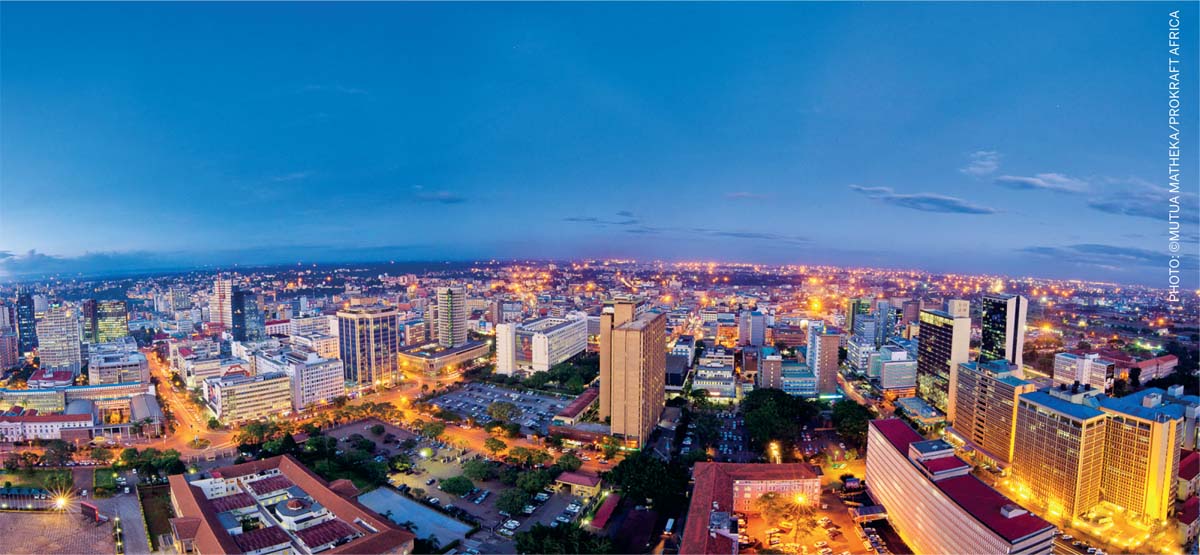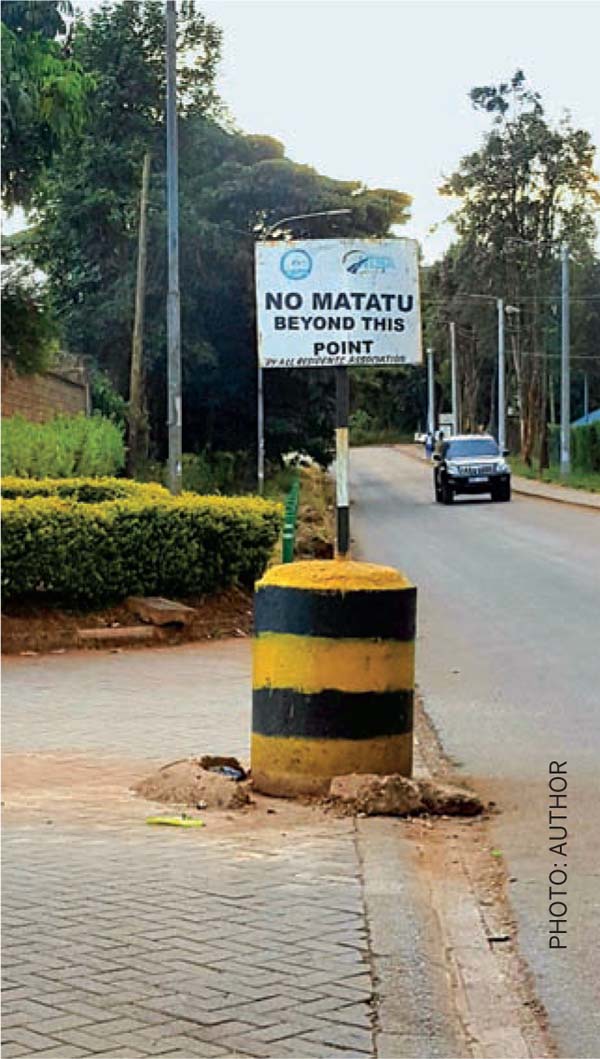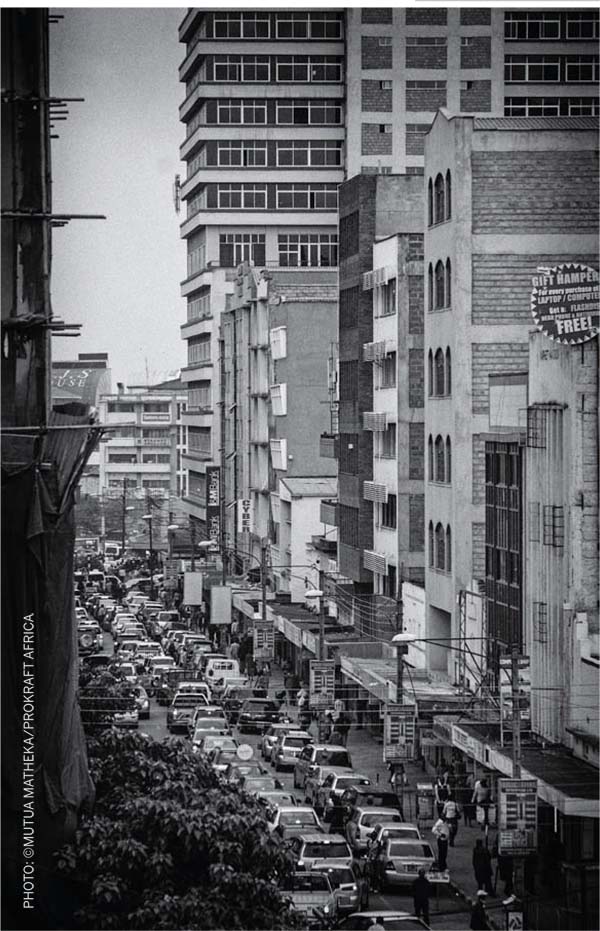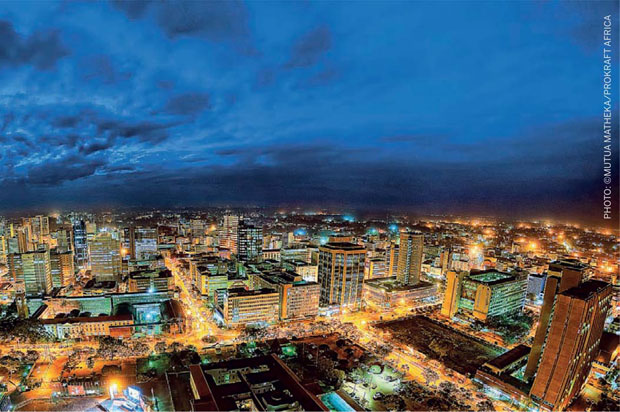Current state of urban mobility
Five in the morning! That’s the average time a person living in Nairobi has to wake up to be at work by 8 a.m. Battling traffic, risking life to cross the busy highway after alighting from a bus and a hop, skip and jump over neglected and divested pedestrian footpaths, then working until 8 p.m., because the rush hour will not let you leave work at 5 p.m., unless ofcourse you are willing to spend a good two hours in traffic to get home. Waiting to leave at 8 p.m. would mean that you get home in 20 minutes. This is the beginning of the end of a social life and a slow but sure death of a healthy life given all the exhaust fumes breathed in every day, thanks to the numerous vehicles that are now choking the once green city under the sun.
The typical everyday life of a Nairobi resident has been made difficult by the lack of efficient public transportation, endless traffic congestion, air pollution and divested pedestrian paths. People are getting angrier as they are forced to sit in traffic all day. We should have better roads, inclusive transport that also caters to non-motorised transport and an organised and efficient public transport system. But we don’t. Instead, we buy more cars and even a nine-year old can tell you what model of a car he would buy when he can afford one. No one thinks of owning a cool ‘gazelle’ bicycle.

In the last decade, Nairobi, Kenya’s capital, has witnessed growth both skyward and outward, swallowing formerly rural and suburban areas. Nairobi’s population is approximately 4 million at present and is projected to be 14 million in the next three decades. The challenge of a growing population has been compounded by the growing middle-class buying vehicles as soon as they can afford them, to the tune of 5,000 vehicles imported every month, that is, 60,000 vehicles every year, while the most popular public transport and non-motorised transport are squeezed out to make way for the car, which has dominated much of the available urban space, contributing to spatial injustice. It is common practise to react to traffic flows exceeding road capacity by expanding and growing the existing roads. However, this only favours more car use, but does not contribute to better flows in terms of persons moved within the city.
The number of vehicles in the city has increased dramatically making traffic congestion so terrible that it makes headlines, not only for the frequent long jams, but also for the health hazard it has become.
Scientific researchers have revealed that the air pollution in Nairobi is 30 times worse than that in London.
The prime cause being the number of motor vehicles releasing exhaust fumes into the air. Everyone in Nairobi breathes huge volumes of exhaust given the number of hours one has to stay in traffic. Having been away from Nairobi for a number of years, returning home was a little shocking to realise that traffic starts piling up at 6 a.m. It is now commonplace to spend two hours in traffic on a journey that would otherwise take just 20 minutes. Besides the wasted man hours, which costs the nation more than half a million dollars a day in productivity, most people have too little time and energy for family and other social activities, consequently lowering the quality of life as research on happiness has revealed that lengthy commutes make people unhappy.
Public transport situation in Nairobi
For the majority who own vehicles in Nairobi, car dependency has become an addiction and as most addictions start with use, they only become manifest when non-use has a negative influence on wellbeing. Car dependency has produced a situation where the users do not see any alternatives or at least have the perception that alternatives are lacking. The government is to blame for this due to the poor and inefficient public transportation that exists in the city. As someone who prefers using public transport in Nairobi, I find that the government’s public transport policy is forcing me to get a car; at least for my convenience and to preserve my life as cycling is a risky affair.
Nairobi has a severe public transportation problem with a system that is bursting at the seams. Using public transport means having to wait, in most places in Nairobi, for as long as 15 minutes to see an empty public service vehicle or matatu and if you are lucky to find one, you may have to wait for an additional 15 minutes for the matatu to fill up before you can embark on the journey to sit in traffic. The drivers are ruthless and prices are usually hiked without notice. God-forbid that you have to get a matatu on a rainy day as it would mean waiting for about an hour or two and having to pay three times as much as the regular charges. In some neighbourhoods, matatus are barred from going into residential areas forcing those who can afford it, to buy a car, adding to the urban blight of traffic-related problems.
When I was growing up in Nairobi, the Kenya Bus service, run by the County Council of Nairobi, used to manage the buses, which ensured efficiency, as the route was circular and on time. Nowadays, the bus system is privatized and operates in the same manner as matatus. The Nairobi County Government has been piloting a Bus Rapid Transit (BRT) system, ostensibly to help reduce traffic congestion and improve urban mobility in the city, but the buses have been sharing the same lanes with other road users, defeating the purpose of rapid transit, while they should instead have dedicated lanes, which would increase efficiency and reduce traffic snarls.
 |  |
Are there other alternatives?
The other alternative is walking to work. Research has shown that approximately 54% of the population of Nairobi walks to work. This is nearly the whole of Paris or to put it in the African context, the whole of The Gambia. The numbers may even be understated because those who combine walking with public transport are excluded from the figures. There is, however, a disregard for the lives of pedestrians and cyclists, which has led to deaths.
A majority of the roads are high risk for pedestrians.
An assessment by the International Roads Assessment Programme (iRAP) in Nairobi found that 95 percent of roads assessed have high pedestrian flows, yet only 20 percent have pedestrian footpaths, forget cycling lanes. It is unnecessarily dangerous and sometimes impossible to walk. Pedestrian paths have been divested and used up as parking places forcing the disabled to pull wheelchairs on the same road space as the motorists with the hope that some unruly driver will not knock them down. Records show that more than 60% of the 400 plus deaths recorded in Nairobi in 2016 involved pedestrians and the numbers continue to rise with each passing year; this despite the existence of a non-motorised transport policy.
Another private alternative to the public problem has been the two-wheel motorcycle otherwise known as bodaboda. Their numbers have increased in recent years providing speedy and reliable transport due to its ability to manoeuvre traffic and reach places that public transport cannot otherwise reach. The industry has grown from $4 billion in 2015 and is set to rise to $9 billion in 2021, especially due to the absence of a reliable and efficient public transport system that cannot cope with the increasing urbanisation rates and traffic congestion.
Aspirations to modernity
The explosive growth in the automobile population needs to be checked quickly by adopting an inclusive urban transport system that would increase the use of public and non-motorised transport. It is clear that the prioritisation of private motor vehicles over other forms of transportation impacts a divide in mobility and contributes to the differentiation of the network, rather than making it more inclusive. Most urban transport planners agree that people will have to stop driving their own personal cars and use public transport or non-motorised transport if cities are to cut congestion, but this will mean that the transport system will have to be aesthetically valuable and extremely efficient.
Efficiency in transportation will be achieved by moving people around a centralised system that incorporates and coordinates data across public transport and non-motorised transport. This will require ingenuity and collaboration among all the stakeholders and significant financing, both from public and private sectors. It will address long term goals for many generations to come as well as change the city’s economic and social outlook but first, addressing the immediate needs of the majority i.e. improving pedestrian paths, will require immediate implementation.

Additionally, excluding affordable transportation from road designs only holds back the advancement of Nairobi’s working class and the urban poor, most of who walk or cycle to work.
Vouching for non-motorised transport in Nairobi would be making a foray into a system that is dominated by private vehicles, but this might just be a breakthrough for economic and social progress in the city. The health-related problems caused by inhaled exhaust fumes would reduce and consequently so would the amount of money spent on medical bills. A success story is Lithuania, where bicycles outsold cars a little over nine times and saw the economy grow by 3.6% in 2012. Cities such as Copenhagen, Amsterdam and Rotterdam cannot stress enough about the merits of cycling for urban development. These cities have reached a common conclusion: that efficient inclusive transport is the solution to clean and green cities free from congestion.
Long-term investment in urban mobility is a critical part of increasing economic opportunity and reducing poverty. Mobility is the most salient aspect for any progressive economy. People’s movement is necessitated by the need to get access to spatially disjointed activities and services that can improve one’s wellbeing and livelihood. When people are cut off or divested from other places in the city as a result of inefficient transport, spatial injustice prevails.
There is a need to establish a trajectory of structural transformation in the transport sector in Nairobi and to get in tune with everyday realities by considering more sustainable means of transport while bearing in mind that the conventional short term solutions to long term problems only serve as an impediment to growth. Safe pedestrian movement, efficient public transport and promoting non-motorised transport will contribute to spatial justice in the city as the efficiency of the entire transport system will place utmost focus on human movement and not vehicular movement. It is people who move from one place to another and not their cars.
It is paramount to plan for the city based on the movement of people rather than vehicular movement.
In Nairobi, it is evident that people with cars have more capacity to influence design. The private vehicle is placed at the centre of decision-making leading to spatial injustices as public transportation and non-motorised transport gets the least share of the bargain. The city needs an agreeable urban transport system that is spatially just and under the control of the society; a system that not only benefits certain social classes but is available for all and meets the demands for all.
Mass transit and non-motorised transport should not be seen as a ‘system for the poor’ but rather for all to move effectively around the city. It could be that the bicycle may be the one solution to many problems and a door opener to many other opportunities, especially in the case of Nairobi.


Comments (0)